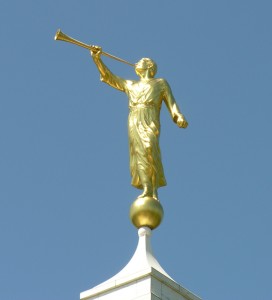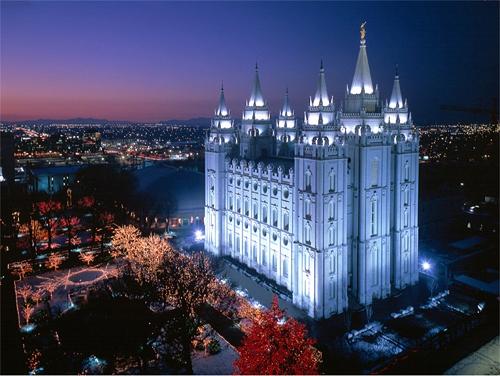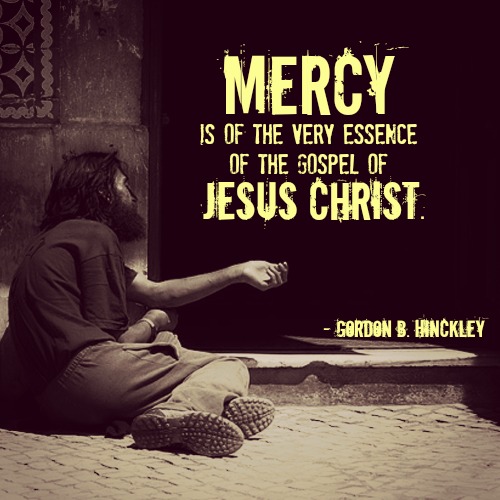My first glimpse of a Mormon temple was of the statue at the very top. My family, lost and looking for an alternative Saturday activity, saw the statue and wound our way through the streets of Los Angeles—the City of Angels—until we found the building it was on. We learned it was a Mormon temple. We weren’t Mormons, but my parents noted there was a visitor’s center and decided it would be a good educational activity for us.
 This statue is an angel. It represents a man named Moroni, whose writings during his lifetime are recorded in the Book of Mormon. He was, in fact, the son of Mormon, for whom the book is named. After his death, he became an angel and played an important role in the history of the Mormons. However, his role began when he was just a teenager.
This statue is an angel. It represents a man named Moroni, whose writings during his lifetime are recorded in the Book of Mormon. He was, in fact, the son of Mormon, for whom the book is named. After his death, he became an angel and played an important role in the history of the Mormons. However, his role began when he was just a teenager.
Moroni and his father belonged to a group of people known as Nephites. In the beginning of the Book of Mormon, we meet the family of a prophet named Lehi. He lived in Jerusalem at the time of the prophet Jeremiah and was also a prophet. God instructed him to leave his wealth and home behind and take his family and a few others into the wilderness because his life was in danger from the enemies of the prophets. In time, they’d cross the ocean into the Americas.
Two of his sons were wicked and two were righteous. (Two younger sons, also righteous, would be born in the wilderness, and there were also daughters.) The oldest of the wicked sons was Laman. The younger of the two righteous sons was Nephi. In time, after the death of the parents, Laman and his followers become so violent that Nephi and his followers were forced to flee. The family divided into two groups, known as Lamanites and Nephites. Most of the time, the Nephites were righteous and had prophets in their line.
They had been promised that if they remained righteous, God would not allow them to be destroyed. However, they eventually fell away from God’s teachings and the Lamanites were permitted to destroy them in a series of deadly battles. Mormon, the prophet, and his son Moroni were among the last survivors of the Nephites when the battles ended, and soon, only Moroni, believed to be a teenager, remained. The Lamanites continued to seek him out, and he was forced into hiding.
Moroni’s father had worked to abridge the records kept by the prophets since the time of Laman, and which were engraved on plates. Moroni completed the book while in hiding and added the final ending to the story, as well as instructions to future generations who would read it. Then he buried the book in a hill called Cumorah and slipped away from the place he had been raised. Eventually, surprised to find himself still alive, he returned secretly and added further instructions before re-burying the book and again fleeing. We have no further record of him until after his death.
In the 1800s, in New York state, a young Joseph Smith receives a visit from Moroni, who is now an angel. As a teenager, Joseph had prayed to know which church to join and was visited in a vision by God and Jesus Christ. He was told the complete truth was not currently on the earth, and he must wait. Moroni was sent to begin the restoration of the complete gospel. While elements of truth remained, the large number of Christian churches, all teaching contradictory information about God, was proof that there had been an apostasy.
Moroni came to Joseph several times to tutor him in preparation for the restoration and to monitor Joseph’s maturity and worthiness to lead the restored church. When Joseph was nearly ready, Moroni showed him where the he had hidden the plates so long ago. However, it was several more years before Joseph was deemed worthy to begin his life’s work. He removed the plates and began the complex task of translating them and of finding a few people who had testimonies of the work at hand. Eventually, with the plates translated and the record published, the church was restored.
Moroni’s life was one of great hardship. He grew up in a world in which the number of good people was rapidly shrinking. He was fighting wars at an age when modern teens are worried about prom dates, and he had sole responsibility for guarding and completing the record of an entire nation when he was just a teenager. As a teenager, hundreds of people were out to kill him and he lived out the remainder of his teen years without family, friends, or even anyone who shared his religious faith. It would be enough to crush most teenagers, but Moroni never caved in to pressure to deny his God—the only way to end the persecution and attempts on his life. He remained strong and faithful through every trial.
 It is fitting that he was chosen to bring the book to those for whom it was written. The ordinary Nephites didn’t have this book. They were instructed to keep the record for our time and to record those things that would be of value to us. As Moroni worked to complete the records, he was shown our day and understood what trials we would face and what we would need to know. He was, therefore, qualified to prepare a teenaged Joseph for a life that would be filled with similar trials resulting from the need to preserve God’s teachings.
It is fitting that he was chosen to bring the book to those for whom it was written. The ordinary Nephites didn’t have this book. They were instructed to keep the record for our time and to record those things that would be of value to us. As Moroni worked to complete the records, he was shown our day and understood what trials we would face and what we would need to know. He was, therefore, qualified to prepare a teenaged Joseph for a life that would be filled with similar trials resulting from the need to preserve God’s teachings.
The temple in Nauvoo, Illinois, built in Joseph Smith’s time, was the first to have an angel atop it. Like most buildings of the time, it had a weather vane, but the temple’s vane was a horizontal angel with a book in one hand and a horn at his lips. An actual statue of an angel was placed on top of the temple in Salt Lake City, Utah in pioneer times. The idea of using Moroni to top the temples was that of Cyrus Dallin, a sculptor who was not LDS, but who discovered Moroni while looking through LDS scriptures to decide what to put on the temple’s spire. He immediately recognized the importance of Moroni’s role in the restoration. Mormonism’s most recognizable symbol, then, was actually the inspiration of someone who was not LDS. Since 1980, this statue has been placed on most new temples, and added to many older ones.
Moroni stands on top of most temples, holding a set of scriptures and blowing a horn to announce the restoration to the world. Today’s model is the work of Karl Quilter of Utah.
Learn more about the statue of Moroni.
Read Moroni’s own story in the Book of Mormon.
Twitter •




